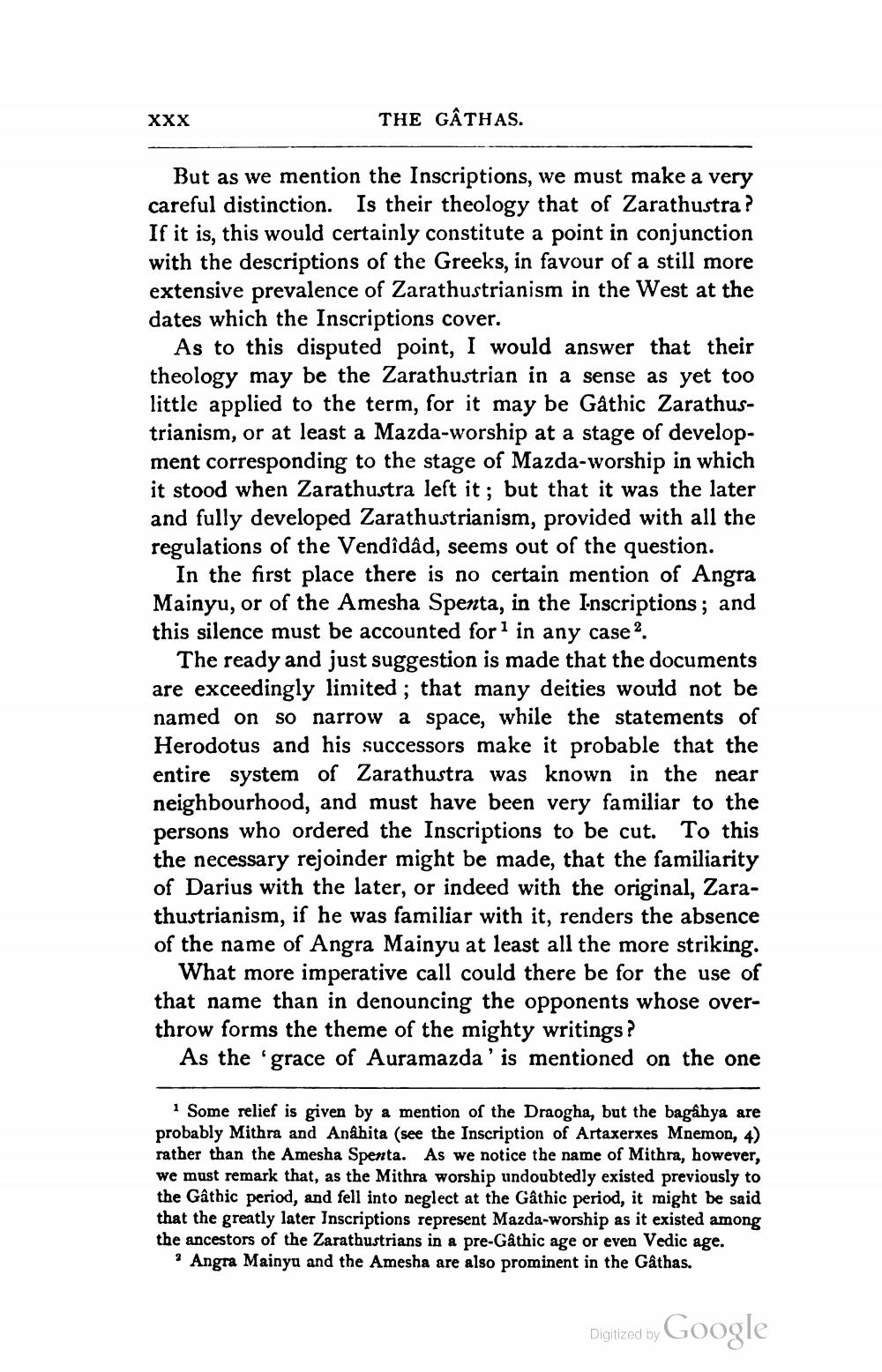________________
XXX
THE GÂTHAS.
But as we mention the Inscriptions, we must make a very careful distinction. Is their theology that of Zarathustra? If it is, this would certainly constitute a point in conjunction with the descriptions of the Greeks, in favour of a still more extensive prevalence of Zarathustrianism in the West at the dates which the Inscriptions cover.
As to this disputed point, I would answer that their theology may be the Zarathustrian in a sense as yet too little applied to the term, for it may be Gâthic Zarathustrianism, or at least a Mazda-worship at a stage of development corresponding to the stage of Mazda-worship in which it stood when Zarathustra left it; but that it was the later and fully developed Zarathustrianism, provided with all the regulations of the Vendidâd, seems out of the question.
In the first place there is no certain mention of Angra Mainyu, or of the Amesha Spenta, in the Inscriptions; and this silence must be accounted for in any case .
The ready and just suggestion is made that the documents are exceedingly limited ; that many deities would not be named on so narrow a space, while the statements of Herodotus and his successors make it probable that the entire system of Zarathustra was known in the near neighbourhood, and must have been very familiar to the persons who ordered the Inscriptions to be cut. To this the necessary rejoinder might be made, that the familiarity of Darius with the later, or indeed with the original, Zarathustrianism, if he was familiar with it, renders the absence of the name of Angra Mainyu at least all the more striking.
What more imperative call could there be for the use of that name than in denouncing the opponents whose overthrow forms the theme of the mighty writings?
As the 'grace of Auramazda' is mentioned on the one
Some relief is given by a mention of the Draogha, but the bagâhya are probably Mithra and Anáhita (see the Inscription of Artaxerxes Mnemon, 4) rather than the Amesha Spenta. As we notice the name of Mithra, however, we must remark that, as the Mithra worship undoubtedly existed previously to the Gâthic period, and fell into neglect at the Gâthic period, it might be said that the greatly later Inscriptions represent Mazda-worship as it existed among the ancestors of the Zarathustrians in a pre-Gåthic age or even Vedic age.
? Angra Mainyu and the Amesha are also prominent in the Gathas.
Digitized by
Digitized by Google




